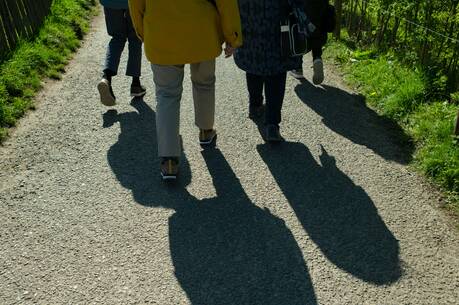Stardust Made Flesh
In recent decades, our understanding of the origins of the universe has grown immensely. We have learned how our universe flashed forth 15 billion years ago in a great explosion of light and that it is ever-expanding, bursting with life from the center outward in creative, chaotic, unique patterns. But what happens at the end?
In the first reading and the Gospel, two different biblical writers reflect on the end times. Both are writing for a people under duress, a people who may feel that the trials and tribulations they are undergoing are the signs of the apocalyptic end time. Will there be something beyond this earthly life? The ancient Israelites thought not.
Some believed they would merely live on in the memories of their descendants. Some spoke of Sheol, the shadowy underworld in which a shade of the former self survived, but that is hardly an afterlife at all. It was only in the second century B.C. that the belief in resurrection and an eternal reward for the righteous began to emerge. Daniel also mentions “everlasting horror and disgrace” for the wicked, but he focuses his attention on what happens to those who have lived wisely and who have led others to seek and do justice. He envisions these people as shining brightly, “like the splendor of the firmament...[they] shall be like the stars forever.”
Cosmologists tell us that our bodies are literally stardust made flesh; they are made of particles that were present in the primeval fireball at the beginning of the universe. Daniel’s image of righteous people becoming stars is, in a sense, inviting us to be true to what we actually are. His words give hope that those who endure tribulation not only tend the divine light within but also radiate goodness to others, increasing the brilliance of the divine radiance, which endures forever.
In today’s Gospel Jesus speaks to his disciples about the days of final tribulation. They are a terrible undoing of creation, an extinguishing of the light of the sun and moon, with the stars falling from the sky. Against the backdrop of this cataclysm Jesus interjects the assurance that he will come again in power and glory, gathering his elect from “the end of the earth to the end of the sky.” He then offers the image of a tender green shoot at springtime, one that insistently bursts forth from the fig tree. Stripped of its leaves and giving every appearance of having died, its life tenaciously sprouts forth anew. And so Jesus assures his disciples that no matter what horrendous suffering they endure, life will rise again in them through his power. In the Gospel there is no reference to punishment of those who are not faithful, only of gathering in all his scattered “elect.”
The question of when all this will take place hangs unanswered. There is a tension in the Gospel. Jesus first says that it will happen in the lifetime of “this generation,” but then he asserts that no one knows the day or the hour—not even he—but only the Father. In between the two sayings is the solid affirmation that Jesus’ words are trustworthy.
Speculation about the end time may not be foremost in believers’ minds these days. But when we are experiencing tribulation, the question of how long it will go on and what will happen afterward is front and center. The readings today give hope that everlasting radiance and tender new beginnings come after refinement in the fiery furnace of suffering.
This article also appeared in print, under the headline “Stardust Made Flesh,” in the November 9, 2009, issue.








